Papers by Yuan-Chung Cheng
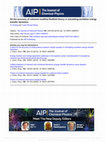
In this study, we investigate the accuracy of a recently developed coherent modified Redfield the... more In this study, we investigate the accuracy of a recently developed coherent modified Redfield theory (CMRT) in simulating excitation energy transfer (EET) dynamics. The CMRT is a secular non-Markovian quantum master equation that is derived by extending the modified Redfield theory to treat coherence dynamics in molecular excitonic systems. Herein, we systematically survey the applicability of the CMRT in a large EET parameter space through the comparisons of the CMRT EET dynamics in a dimer system with the numerically exact results. The results confirm that the CMRT exhibits a broad applicable range and allow us to locate the specific parameter regimes where CMRT fails to provide adequate results. Moreover, we propose an accuracy criterion based on the magnitude of second-order perturbation to characterize the applicability of CMRT and show that the criterion summarizes all the benchmark results and the physics described by CMRT. Finally, we employ the accuracy criterion to quantitatively compare the performance of CMRT to that of a small polaron quantum master equation approach. The comparison demonstrates the complementary nature of these two methods, and as a result, the combination of the two methods provides accurate simulations of EET dynamics for the full parameter space investigated in this study. Our results not only delicately evaluate the applicability of the CMRT but also reveal new physical insights for factors controlling the dynamics of EET that should be useful for developing more accurate and efficient methods for simulations of EET dynamics in molecular aggregate systems.
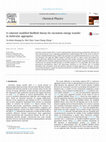
Abstract Excitation energy transfer (EET) is crucial in photosynthetic light harvesting, and quan... more Abstract Excitation energy transfer (EET) is crucial in photosynthetic light harvesting, and quantum coherence has been recently proven to be a ubiquitous phenomenon in photosynthetic EET. In this work, we derive a coherent modified Redfield theory (CMRT) that generalizes the modified Redfield theory to treat coherence dynamics. We apply the CMRT method to simulate the EET in a dimer system and compare the results with those obtained from numerically exact path integral calculations. The comparison shows that CMRT provides excellent computational efficiency and accuracy within a large EET parameter space. Furthermore, we simulate the EET dynamics in the FMO complex at 77K using CMRT. The results show pronounced non-Markovian effects and long-lasting coherences in the ultrafast EET, in excellent agreement with calculations using the hierarchy equation of motion approach. In summary, we have successfully developed a simple yet powerful framework for coherent EET dynamics in photosynthetic systems and organic materials.

We present a non-Markovian quantum jump (NMQJ) approach for simulating coherent energy transfer d... more We present a non-Markovian quantum jump (NMQJ) approach for simulating coherent energy transfer dynamics in molecular systems in the presence of laser fields. By combining a coherent modified Redfield theory (CMRT) and a NMQJ method, this new approach inherits the broad-range validity from the CMRT and highly efficient propagation from the NMQJ. To implement NMQJ propagation of CMRT, we show that the CMRT master equation can be cast into a generalized Lindblad form. Moreover, we extend the NMQJ approach to treat time-dependent Hamiltonian, enabling the description of excitonic systems under coherent laser fields. As a benchmark of the validity of this new method, we
show that the CMRT–NMQJ method accurately describes the energy transfer dynamics in a prototypical photosynthetic complex. Finally, we apply this new approach to simulate the quantum dynamics of a dimer system coherently excited to coupled single-excitation states under the influence of laser fields, which allows us to investigate the interplay between the photoexcitation process and ultrafast energy transfer dynamics in the system. We demonstrate that laserfield
parameters significantly affect coherence dynamics of photoexcitations in excitonic systems, which indicates that the photoexcitation process must be explicitly considered in order to properly describe photon-induced dynamics in photosynthetic systems. This work should provide a valuable tool for efficient simulations of coherent control of energy flow in photosynthetic systems and artificial optoelectronic materials.

J. Chem. Phys.
The small polaron quantum master equation (SPQME) proposed by Jang et al. [J. Chem. Phys. 129, 10... more The small polaron quantum master equation (SPQME) proposed by Jang et al. [J. Chem. Phys. 129, 101104 (2008)] is a promising approach to describe coherent excitation energy transfer dynamics in complex molecular systems. To determine the applicable regime of the SPQME approach, we per- form a comprehensive investigation of its accuracy by comparing its simulated population dynamics with numerically exact quasi-adiabatic path integral calculations. We demonstrate that the SPQME method yields accurate dynamics in a wide parameter range. Furthermore, our results show that the accuracy of polaron theory depends strongly upon the degree of exciton delocalization and timescale of polaron formation. Finally, we propose a simple criterion to assess the applicability of the SPQME theory that ensures the reliability of practical simulations of energy transfer dynamics with SPQME in light-harvesting systems.
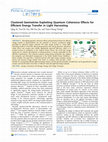
J. Phys. Chem. Lett.
Elucidating quantum coherence effects and geometrical factors for efficient
energy transfer in p... more Elucidating quantum coherence effects and geometrical factors for efficient
energy transfer in photosynthesis has the potential to uncover nonclassical design
principles for advanced organic materials. We study energy transfer in a linear light-
harvesting model to reveal that dimerized geometries with strong electronic coherences
within donor and acceptor pairs exhibit significantly improved efficiency, which is in
marked contrast to predictions of the classical Förster theory. We reveal that energy
tuning due to coherent delocalization of photoexcitations is mainly responsible for the
efficiency optimization. This coherence-assisted energy-tuning mechanism also explains
the energetics and chlorophyll arrangements in the widely studied Fenna−Matthews−
Olson complex. We argue that a clustered network with rapid energy relaxation among
donors and resonant energy transfer from donor to acceptor states provides a basic
formula for constructing efficient light-harvesting systems, and the general principles revealed here can be generalized to larger systems and benefit future innovation of efficient molecular light-harvesting materials.
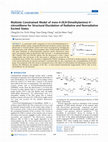
J. Phys. Chem. A
A constrained model compound of trans-4-(N,N-dimethylamino)-4′-
nitrostilbene (DNS), namely, com... more A constrained model compound of trans-4-(N,N-dimethylamino)-4′-
nitrostilbene (DNS), namely, compound DNS-B3 that is limited to torsions about the
phenyl-nitro C−N bond and the central CC bond, was prepared to investigate the
structural nature of the radiative and nonradiative states of electronically excited DNS.
The great similarities in solvent-dependent electronic spectra, fluorescence decay
times, and quantum yields for fluorescence (Φf) and trans → cis photoisomerization
(Φtc) between DNS and DNS-B3 indicate that the fluorescence is from a planar
charge-transfer state and torsion of the nitro group is sufficient to account for the
nonradiative decay of DNS. This conclusion is supported by TDDFT calculations on DNS-B3 in dichloromethane. The structure at the conical intersection for internal conversion is associated with not only a twisting but also a pyramidalization of the nitro group. The mechanism of the NO2 torsion is discussed in terms of the effects of solvent polarity, the substituents, and the volume demand. The differences and analogies of the NO2- vs amino-twisted intramolecular charge-transfer (TICT) state of trans- aminostilbenes are also discussed.
Nat. Phys.
Recent evidence suggests that a variety of organisms may harness some of the unique features of q... more Recent evidence suggests that a variety of organisms may harness some of the unique features of quantum mechanics to gain a biological advantage. These features go beyond trivial quantum effects and may include harnessing quantum coherence on physiologically important timescales. In this brief review we summarize the latest results for non-trivial quantum effects in photosynthetic light harvesting, avian magnetoreception and several other candidates for functional quantum biology. We present both the evidence for and arguments against there being a functional role for quantum coherence in these systems.
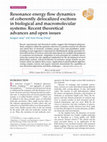
Wiley Interdisciplinary Reviews: …, Jan 1, 2012
Recent experimental and theoretical studies suggest that biological photosyn- thetic complexes ut... more Recent experimental and theoretical studies suggest that biological photosyn- thetic complexes utilize the quantum coherence in a positive manner for efficient and robust flow of electronic excitation energy. Clear and quantitative under- standing of such suggestion is important for identifying the design principles be- hind efficient flow of excitons coherently delocalized over multiple chromophores in condensed environments. Adaptation of such principles for synthetic macro- molecular systems has also significant implication for the development of novel photovoltaic systems. Advanced theories of resonance energy transfer are pre- sented, which can address these issues. Applications to photosynthetic light har- vesting complex systems and organic materials demonstrate the capabilities of new theoretical approaches and future challenges.

The Journal of Chemical Physics, Jan 1, 2012
We investigate the Markovian limit of a polaronic quantum master equation for coherent resonance ... more We investigate the Markovian limit of a polaronic quantum master equation for coherent resonance energy transfer proposed recently by Jang et al. [J. Chem. Phys. 129, 101104 (2008)]. An expression for the rate of excitation energy transfer (EET) is derived and shown to exhibit both coherent and incoherent contributions. We then apply this theory to calculated EET rates for model dimer sys- tems, and demonstrate that the small-polaron approach predicts a variety of dynamical behaviors. Notably, the results indicate that the EET dynamical behaviors can be understood by the interplay between noise-assisted EET and dynamical localization, while both are well captured by the polaron theory. Finally, we investigate bath correlation effects on the rate of EET and show that bath corre- lations (or anti-correlations) can either enhance or suppress EET rate depending on the strength of individual system-bath couplings. In summary, we introduce the small-polaron approach as an intu- itive physical framework to consolidate our understanding of EET dynamics in the condensed phase.
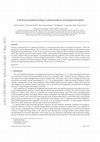
arXiv preprint arXiv: …, Jan 1, 2012
Is there a functional role for quantum mechanics or coherent quantum effects in biological proces... more Is there a functional role for quantum mechanics or coherent quantum effects in biological processes? While this question is as old as quantum theory, only recently have measurements on biological systems on ultra-fast time-scales shed light on a possible answer. In this review we give an overview of the two main candidates for biological systems which may harness such functional quantum effects: photosynthesis and magnetoreception. We discuss some of the latest evidence both for and against room temperature quantum coherence, and consider whether there is truly a functional role for coherence in these biological mechanisms. Finally, we give a brief overview of some more speculative examples of functional quantum biology including the sense of smell, long-range quantum tunneling in proteins, biological photoreceptors, and the flow of ions across a cell membrane.
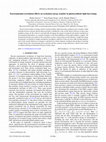
Physical Review E, Jan 1, 2011
Several recent studies of energy transfer in photosynthetic light harvesting complexes have revea... more Several recent studies of energy transfer in photosynthetic light harvesting complexes have revealed a subtle interplay between coherent and decoherent dynamic contributions to the overall transfer efficiency in these open quantum systems. In this work we systematically investigate the impact of temporal and spatial correlations in environmental fluctuations on excitation transport in the Fenna-Matthews-Olson photosynthetic complex. We demonstrate that the exact nature of the correlations can have a large impact on the efficiency of light harvesting. In particular, we find that (i) spatial correlations can enhance coherences in the site basis while slowing transport, and (ii) the overall efficiency of transport is optimized at a finite temporal correlation that produces maximum overlap between the environmental power spectrum and the excitonic energy differences, which in turn results in enhanced driving of transitions between excitonic states.
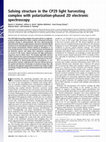
Proceedings of the …, Jan 1, 2011
The CP29 light harvesting complex from green plants is a pigment-protein complex believed to coll... more The CP29 light harvesting complex from green plants is a pigment-protein complex believed to collect, conduct, and quench electronic excitation energy in photosynthesis. We have spectroscopically determined the relative angle between electronic transition dipole moments of its chlorophyll excitation energy transfer pairs in their local protein environments without relying on simulations or an X-ray crystal structure. To do so, we measure a basis set of polarized 2D electronic spectra and isolate their absorptive components on account of the tensor relation between the light polarization sequences used to obtain them. This broadly applicable advance further enhances the acuity of polarized 2D electronic spectroscopy and provides a general means to initiate or feed back on the structural modeling of electronically-coupled chromophores in condensed phase systems, tightening the inferred relations between the spatial and electronic landscapes of ultrafast energy flow. We also discuss the pigment composition of CP29 in the context of light harvesting, energy channeling, and photoprotection within photosystem II.
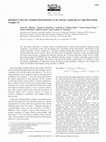
The Journal of …, Jan 1, 2009
The near-unity efficiency of energy transfer in photosynthesis makes photosynthetic light-harvest... more The near-unity efficiency of energy transfer in photosynthesis makes photosynthetic light-harvesting complexes a promising avenue for developing new renewable energy technologies. Knowledge of the energy landscape of these complexes is essential in understanding their function, but its experimental determination has proven elusive. Here, the observation of quantum coherence using two-dimensional electronic spectroscopy is employed to directly measure the 14 lowest electronic energy levels in lightharvesting complex II (LHCII), the most abundant antenna complex in plants containing approximately 50% of the world's chlorophyll. We observe that the electronically excited states are relatively evenly distributed, highlighting an important design principle of photosynthetic complexes that explains the observed ultrafast intracomplex energy transfer in LHCII. |Ψ(t)〉〈Ψ(t)| ) |a| 2 |e 1 〉〈e 1 | + |b| 2 |e 2 〉〈e 2 | + ab*e -i(ω 1 -ω 2 )t |e 1 〉〈e 2 | + a*be i(ω 1 -ω 2 )t |e 2 〉〈e 1 | (1)
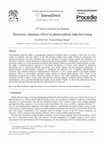
Procedia Chemistry, Jan 1, 2011
Photosynthetic light harvesting is a paradigmatic example for quantum effects in biology. In this... more Photosynthetic light harvesting is a paradigmatic example for quantum effects in biology. In this work, we review studies on quantum coherence effects in the LH2 antenna complex from purple bacteria to demonstrate how quantum mechanical rules play important roles in the speedup of excitation energy transfer, the stabilization of electronic excitations, and the robustness of light harvesting in photosynthesis. Subsequently, we present our recent theoretical studies on exciton dynamical localization and excitonic coherence generation in photosynthetic systems. We apply a variational-polaron approach to investigate decoherence of exciton states induced by dynamical fluctuations due to system-environment interactions. The results indicate that the dynamical localization of photoexcitations in photosynthetic complexes is significant and imperative for a complete understanding of coherence and excitation dynamics in photosynthesis. Moreover, we use a simple model to investigate quantum coherence effects in intercomplex excitation energy transfer in natural photosynthesis, with a focus on the likelihoods of generating excitonic coherences during the process. Our model simulations reveal that excitonic coherence between acceptor exciton states and transient nonlocal quantum correlation between distant pairs of chromophores can be generated through intercomplex energy transfer. Finally, we discuss the implications of these theoretical works and important open questions that remain to be answered.
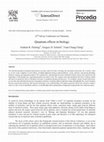
Procedia Chemistry, Jan 1, 2011
The idea that quantum-mechanical phenomena can play nontrivial roles in biology has fascinated re... more The idea that quantum-mechanical phenomena can play nontrivial roles in biology has fascinated researchers for a century. Here we review some examples of such effects, including light-harvesting in photosynthesis, vision, electron-and proton-tunneling, olfactory sensing, and magnetoreception. We examine how experimental tests have aided this field in recent years and discuss the importance of developing new experimental probes for future work. We examine areas that should be the focus of future studies and touch on questions such as biological relevance of quantum-mechanical processes. To exemplify current research directions, we provide some detailed discussions of quantum-coherence in photosynthetic light-harvesting and highlight the crucial interplay between experiment and theory that has provided leaps in our understanding. We address questions about why coherence matters, what it is, how it can be identified, and how we should think about optimization of light-harvesting and the role coherence plays.
Accounts of chemical …, Jan 1, 2009
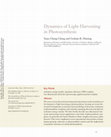
Annual review of physical chemistry, Jan 1, 2009
We review recent theoretical and experimental advances in the elucidation of the dynamics of ligh... more We review recent theoretical and experimental advances in the elucidation of the dynamics of light harvesting in photosynthesis, focusing on recent theoretical developments in structure-based modeling of electronic excitations in photosynthetic complexes and critically examining theoretical models for excitation energy transfer. We then briefly describe two-dimensional electronic spectroscopy and its application to the study of photosynthetic complexes, in particular the Fenna-Matthews-Olson complex from green sulfur bacteria. This review emphasizes recent experimental observations of longlasting quantum coherence in photosynthetic systems and the implications of quantum coherence in natural photosynthesis. 241 Annu. Rev. Phys. Chem. 2009.60:241-262. Downloaded from arjournals.annualreviews.org by University of Vienna -Central Library for Physics on 10/19/09. For personal use only. RC: reaction center PPC: pigmentprotein complex EET: excitation energy transfer FMO: Fenna-Matthews-Olson protein of green sulfur bacteria LHCII: the major light-harvesting complex of plants 242 Cheng · Fleming Annu. Rev. Phys. Chem. 2009.60:241-262. Downloaded from arjournals.annualreviews.org by University of Vienna -Central Library for Physics on 10/19/09. For personal use only. www.annualreviews.org • Light Harvesting in Photosynthesis 243 Annu. Rev. Phys. Chem. 2009.60:241-262. Downloaded from arjournals.annualreviews.org by University of Vienna -Central Library for Physics on 10/19/09. For personal use only.
The Journal of Physical Chemistry A, Jan 1, 2008
We study the coherence quantum beats in two-dimensional (2D) electronic spectroscopy of a coupled... more We study the coherence quantum beats in two-dimensional (2D) electronic spectroscopy of a coupled dimer system using a theoretical method based on a time-nonlocal quantum master equation and a recently proposed scheme for the evaluation of the third-order photon echo polarization [Gelin, M. F.; Egorova, D.; Domcek, W. J. Chem. Phys. 2005, 123, 164112]. The simulations show that the amplitude and peak shape beating in the 2D spectra is a result of the interplay between the rephasing and non-rephasing contributions to the 2D signals and can be used to elucidate the coherence dynamics in a multichromophoric system. In addition, the results suggest that the rephasing and non-rephasing 2D spectra contain complementary information, and a study of both of them could provide more dynamical information from 2D electronic spectroscopy.
The Journal of chemical …, Jan 1, 2008
A theory of coherent resonance energy transfer is developed combining the polaron transformation ... more A theory of coherent resonance energy transfer is developed combining the polaron transformation and a time-local quantum master equation formulation, which is valid for arbitrary spectral densities including common modes. The theory contains inhomogeneous terms accounting for nonequilibrium initial preparation effects and elucidates how quantum coherence and nonequilibrium effects manifest themselves in the coherent energy transfer dynamics beyond the weak resonance coupling limit of the Förster and Dexter ͑FD͒ theory. Numerical tests show that quantum coherence can cause significant changes in steady state donor/acceptor populations from those predicted by the FD theory and illustrate delicate cooperation of nonequilibrium and quantum coherence effects on the transient population dynamics.




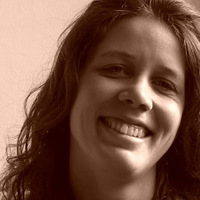
Uploads
Papers by Yuan-Chung Cheng
show that the CMRT–NMQJ method accurately describes the energy transfer dynamics in a prototypical photosynthetic complex. Finally, we apply this new approach to simulate the quantum dynamics of a dimer system coherently excited to coupled single-excitation states under the influence of laser fields, which allows us to investigate the interplay between the photoexcitation process and ultrafast energy transfer dynamics in the system. We demonstrate that laserfield
parameters significantly affect coherence dynamics of photoexcitations in excitonic systems, which indicates that the photoexcitation process must be explicitly considered in order to properly describe photon-induced dynamics in photosynthetic systems. This work should provide a valuable tool for efficient simulations of coherent control of energy flow in photosynthetic systems and artificial optoelectronic materials.
energy transfer in photosynthesis has the potential to uncover nonclassical design
principles for advanced organic materials. We study energy transfer in a linear light-
harvesting model to reveal that dimerized geometries with strong electronic coherences
within donor and acceptor pairs exhibit significantly improved efficiency, which is in
marked contrast to predictions of the classical Förster theory. We reveal that energy
tuning due to coherent delocalization of photoexcitations is mainly responsible for the
efficiency optimization. This coherence-assisted energy-tuning mechanism also explains
the energetics and chlorophyll arrangements in the widely studied Fenna−Matthews−
Olson complex. We argue that a clustered network with rapid energy relaxation among
donors and resonant energy transfer from donor to acceptor states provides a basic
formula for constructing efficient light-harvesting systems, and the general principles revealed here can be generalized to larger systems and benefit future innovation of efficient molecular light-harvesting materials.
nitrostilbene (DNS), namely, compound DNS-B3 that is limited to torsions about the
phenyl-nitro C−N bond and the central CC bond, was prepared to investigate the
structural nature of the radiative and nonradiative states of electronically excited DNS.
The great similarities in solvent-dependent electronic spectra, fluorescence decay
times, and quantum yields for fluorescence (Φf) and trans → cis photoisomerization
(Φtc) between DNS and DNS-B3 indicate that the fluorescence is from a planar
charge-transfer state and torsion of the nitro group is sufficient to account for the
nonradiative decay of DNS. This conclusion is supported by TDDFT calculations on DNS-B3 in dichloromethane. The structure at the conical intersection for internal conversion is associated with not only a twisting but also a pyramidalization of the nitro group. The mechanism of the NO2 torsion is discussed in terms of the effects of solvent polarity, the substituents, and the volume demand. The differences and analogies of the NO2- vs amino-twisted intramolecular charge-transfer (TICT) state of trans- aminostilbenes are also discussed.
show that the CMRT–NMQJ method accurately describes the energy transfer dynamics in a prototypical photosynthetic complex. Finally, we apply this new approach to simulate the quantum dynamics of a dimer system coherently excited to coupled single-excitation states under the influence of laser fields, which allows us to investigate the interplay between the photoexcitation process and ultrafast energy transfer dynamics in the system. We demonstrate that laserfield
parameters significantly affect coherence dynamics of photoexcitations in excitonic systems, which indicates that the photoexcitation process must be explicitly considered in order to properly describe photon-induced dynamics in photosynthetic systems. This work should provide a valuable tool for efficient simulations of coherent control of energy flow in photosynthetic systems and artificial optoelectronic materials.
energy transfer in photosynthesis has the potential to uncover nonclassical design
principles for advanced organic materials. We study energy transfer in a linear light-
harvesting model to reveal that dimerized geometries with strong electronic coherences
within donor and acceptor pairs exhibit significantly improved efficiency, which is in
marked contrast to predictions of the classical Förster theory. We reveal that energy
tuning due to coherent delocalization of photoexcitations is mainly responsible for the
efficiency optimization. This coherence-assisted energy-tuning mechanism also explains
the energetics and chlorophyll arrangements in the widely studied Fenna−Matthews−
Olson complex. We argue that a clustered network with rapid energy relaxation among
donors and resonant energy transfer from donor to acceptor states provides a basic
formula for constructing efficient light-harvesting systems, and the general principles revealed here can be generalized to larger systems and benefit future innovation of efficient molecular light-harvesting materials.
nitrostilbene (DNS), namely, compound DNS-B3 that is limited to torsions about the
phenyl-nitro C−N bond and the central CC bond, was prepared to investigate the
structural nature of the radiative and nonradiative states of electronically excited DNS.
The great similarities in solvent-dependent electronic spectra, fluorescence decay
times, and quantum yields for fluorescence (Φf) and trans → cis photoisomerization
(Φtc) between DNS and DNS-B3 indicate that the fluorescence is from a planar
charge-transfer state and torsion of the nitro group is sufficient to account for the
nonradiative decay of DNS. This conclusion is supported by TDDFT calculations on DNS-B3 in dichloromethane. The structure at the conical intersection for internal conversion is associated with not only a twisting but also a pyramidalization of the nitro group. The mechanism of the NO2 torsion is discussed in terms of the effects of solvent polarity, the substituents, and the volume demand. The differences and analogies of the NO2- vs amino-twisted intramolecular charge-transfer (TICT) state of trans- aminostilbenes are also discussed.